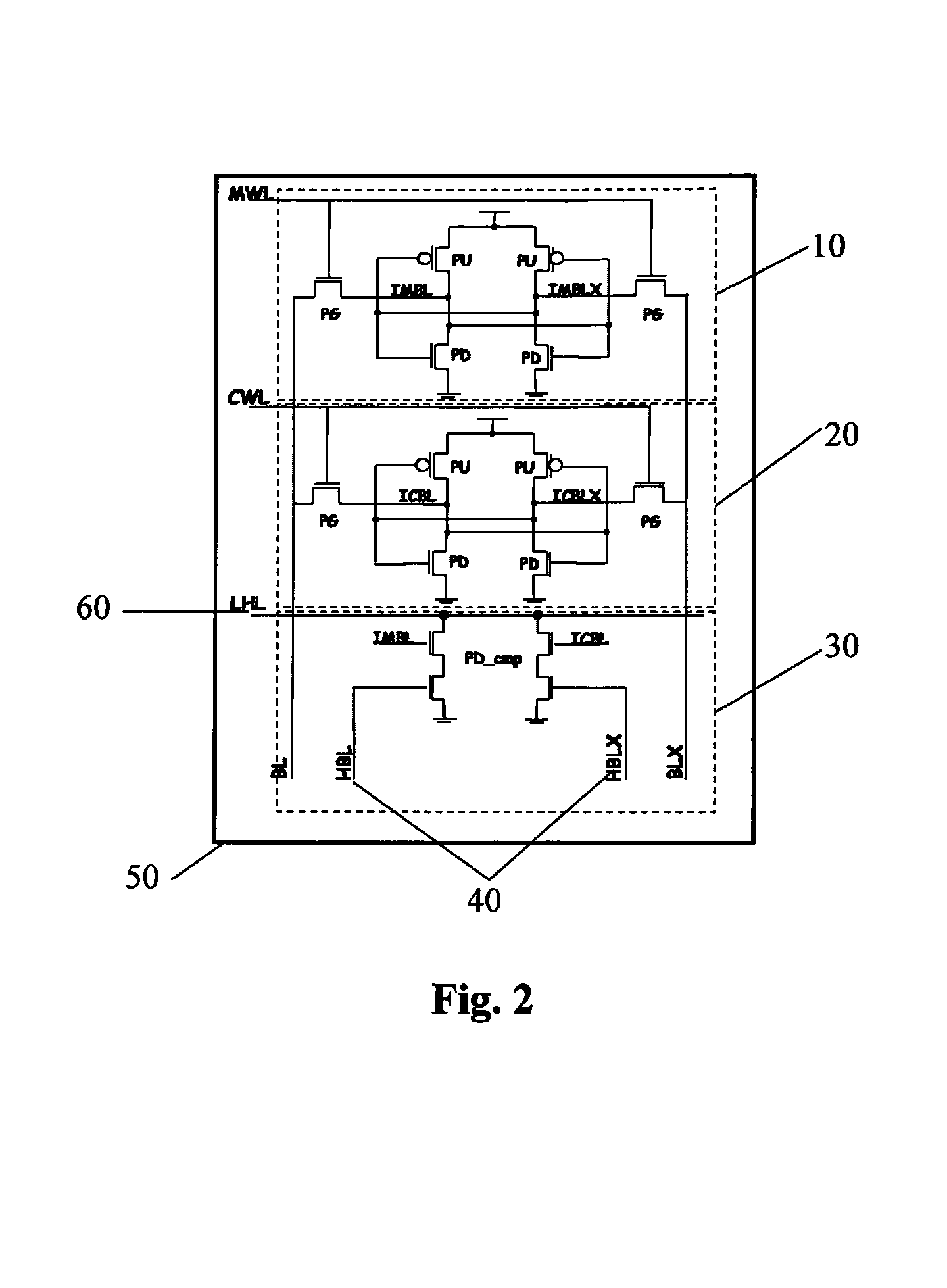Pushed-rule bit cells with new functionality
a bit cell and push-rule technology, applied in the direction of information storage, static storage, digital storage, etc., can solve the problems of performance and limit the maximum frequency of operation of the integrated circuit, and achieve the effects of reducing the area of the sram bit cell, improving performance, and reducing power dissipation
- Summary
- Abstract
- Description
- Claims
- Application Information
AI Technical Summary
Benefits of technology
Problems solved by technology
Method used
Image
Examples
Embodiment Construction
Preferred Embodiment—FIGS. 1, 2, 3, 4, 5, and 6
[0020]An example of the base layout layers of a preferred embodiment of the pushed rule bit cell with new functionality of the present invention is illustrated in FIG. 6. Active layer geometries are denoted by a dotted pattern 440FIG. 6. Polysilicon geometries are denoted by a crosshatch pattern 430FIG. 6. In the preferred embodiment the bit cell has the functionality of a TCAM bit cell 50 illustrated in FIG. 2. The TCAM bit cell 460FIG. 6 is constructed from a 6T SRAM bit-cell layout 450FIG. 6, a mirrored 6T SRAM bit-cell layout 400FIG. 6, a half compare cell layout 420FIG. 6, and a mirrored half compare cell layout 410FIG. 6.
[0021]A 6T bit-cell schematic 70 is illustrated in FIG. 1. The TCAM bit-cell schematic 50 in FIG. 2 is composed of three parts: two 6T bit cells 10 and 20, and one compare circuit 30. FIG. 4 illustrates a TCAM bit-cell floor plan showing the TCAM bit cell 220 to be composed of two 6T SRAM bit cells 200 arrayed wit...
PUM
 Login to View More
Login to View More Abstract
Description
Claims
Application Information
 Login to View More
Login to View More - R&D
- Intellectual Property
- Life Sciences
- Materials
- Tech Scout
- Unparalleled Data Quality
- Higher Quality Content
- 60% Fewer Hallucinations
Browse by: Latest US Patents, China's latest patents, Technical Efficacy Thesaurus, Application Domain, Technology Topic, Popular Technical Reports.
© 2025 PatSnap. All rights reserved.Legal|Privacy policy|Modern Slavery Act Transparency Statement|Sitemap|About US| Contact US: help@patsnap.com



